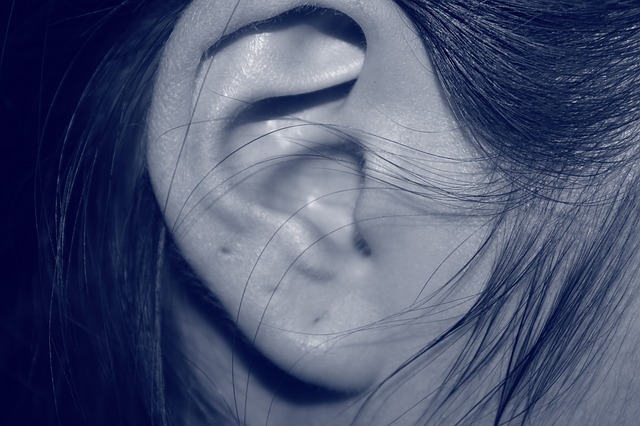I know this is a somewhat unusual blog post for me. I don’t often write about this type of alternative treatment for migraines, but in reading some blogs and research, I thought it was worth a mention and would be interesting to get some input from you on this subject.
I am a huge proponent of alternative treatments for migraines since I would much rather “go the alternative route” than take a bunch of medication, but I also understand both sides of the spectrum. There are many alternative remedies out there, and many of them have helped me find relief with my own migraines (having gone from daily migraines to a couple of times per month with natural remedies).
As migraineurs, we know the statistics are high, but did you know that migraine is one of the worst but most common ailments affecting 29 million people in the US alone? As a migraine sufferer, I am sure you are intimately familiar with the throbbing headache that isn’t just painful but is often debilitating, as well as very stressful. Because there are so many reasons and triggers for migraines, it is not only difficult to treat them, but on top of that, doctors prescribe migraine medication that can also have many common side effects which may vary from person-to-person.
One of the latest alternatives for migraine is daith piercing. As you probably know, this is different from regular ear piercing, because it is done through the cartilage of the inner ear.
Let me note here that to date, no research or studies exist to prove that daith piercing works. However, it is one of the hottest, most current trends being talked about. If you follow social media, you will probably have noticed a large number of people are jumping on the bandwagon and giving testimonials regarding how it has actually worked for them.
What is it and what does it do?
Daith piercing works on the same type of principles as acupuncture. Acupuncture works really well for some (but not all) migraine sufferers. Acupuncture works through stimulation of nerves which lie under the skin and in muscle tissue. The method then causes the body to release pain-relieving endorphins that reduce the intensity of migraine pain.
A short disclaimer here: daith piercing should only be done by a trained professional, and is not something you should attempt at home. Many alternative medicine practitioners advocate for daith piercing, but as always, do your own research first, and be sure to consult your doctor first before trying this type of remedy.
The science behind it
As I mentioned, at this point, this has not been scientifically proven. While daith piercing is being highly advocated by social media users, to date, this is one of those alternative remedies that is not yet being “prescribed” by doctors or scientists as a whole.
So what I would love to know is where do you stand on daith piercing, and even more interestingly, have you had this done yourself? If so, how has it worked? Comment below and let me know. And then, go into our private Migraine Support Facebook Group and share your thoughts and opinions there.
PORK LOIN WITH THYME-ROASTED CARROTS
Serves 4
 INGREDIENTS:
INGREDIENTS:
2 pounds pork loin
2 tablespoons Dijon mustard
2 tablespoons sugar-free whole grain mustard
1 tablespoon extra-virgin olive oil
sea salt and pepper, to taste
1 lb. tri-color baby carrots
2 garlic cloves, minced
2 T. balsamic vinegar
1 T. coconut oil, melted
2 T. fresh thyme leaves
Salt and pepper, to taste
*Vegan option: skip the pork loin and add 1 15-ounce can of black beans and 1-pound Brussels sprouts to the carrots.
DIRECTIONS:
Preheat your oven to 400 degrees F and line a large, rimmed baking sheet with a piece of parchment paper. Place the pork loin in the center of the lined baking sheet and set aside.
In a small glass or other non-reactive bowls, combine the Dijon and whole-grain mustard with the olive oil. Massage the pork loin with the mustard mixture, then sprinkle both sides with salt and pepper, to taste.
Place the baby carrots in a separate, large bowl and add the garlic, balsamic vinegar, coconut oil, and fresh thyme. Season with salt and pepper, to taste, and toss to combine.
Spread the carrots in a single layer around the seasoned pork tenderloin on the baking sheet and pour any remaining juices from the bowl on top.
Cook for 20 minutes, then remove the baking sheet from the oven and flip the pork. Cook for another 15-20 minutes, or until the pork reaches an internal temperature of at least 145° for medium-rare and the carrots are nicely caramelized.
Remove from oven and let pork loin rest for 3-5 minutes before slicing. Serve warm with roasted baby carrots.
*If you are making the vegan version, simply add Brussels sprouts to the carrots. Roast the mixture for about 30 minutes, or until the vegetables are golden brown. Add the can of black beans to a medium-sized pot. Season with 1 teaspoon of onion powder, 1 teaspoon of garlic powder, sea salt, and black pepper to taste. Add a few tablespoons of water if the beans become dry. Sauté until warm and serve with the roasted vegetables.

